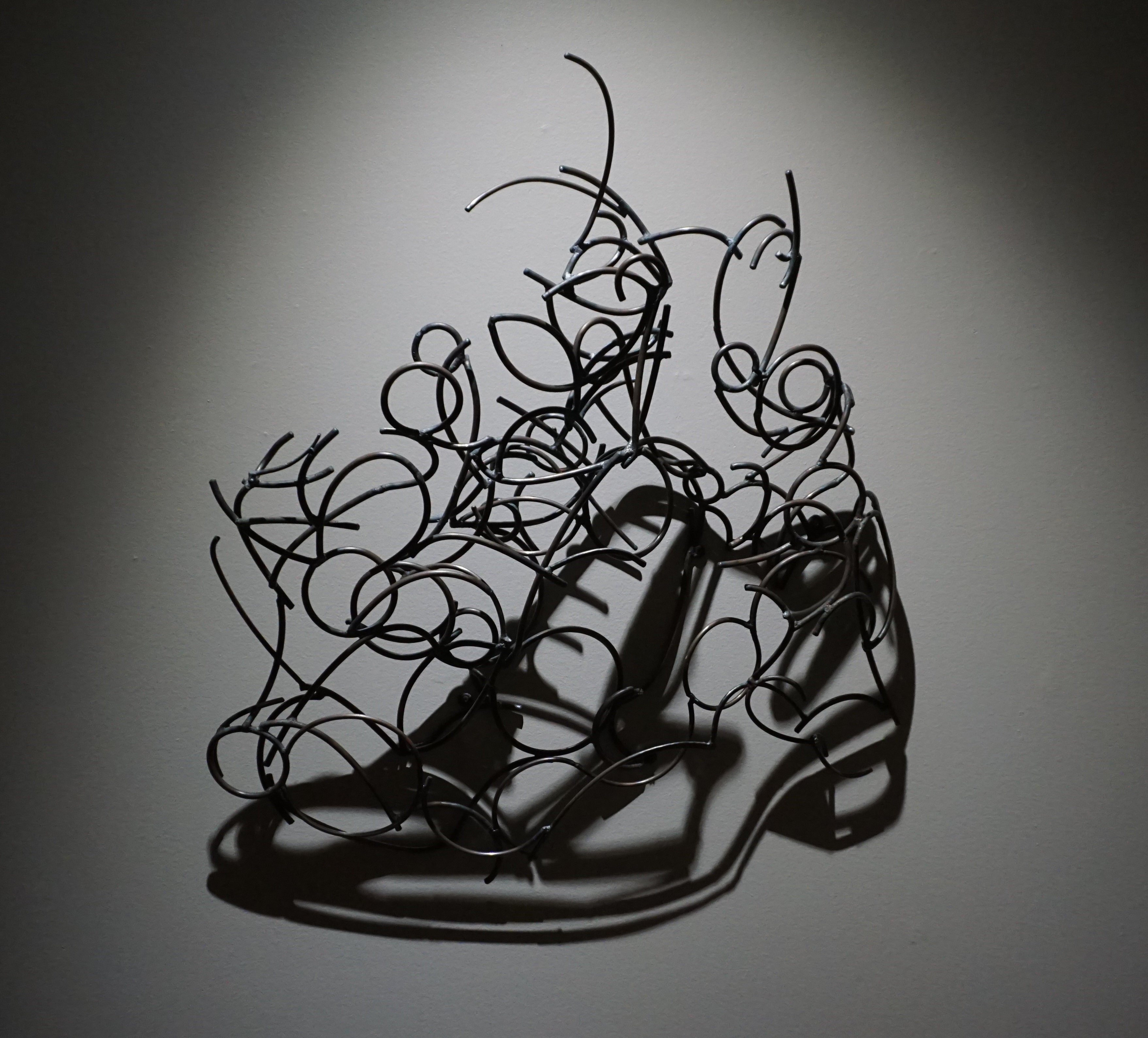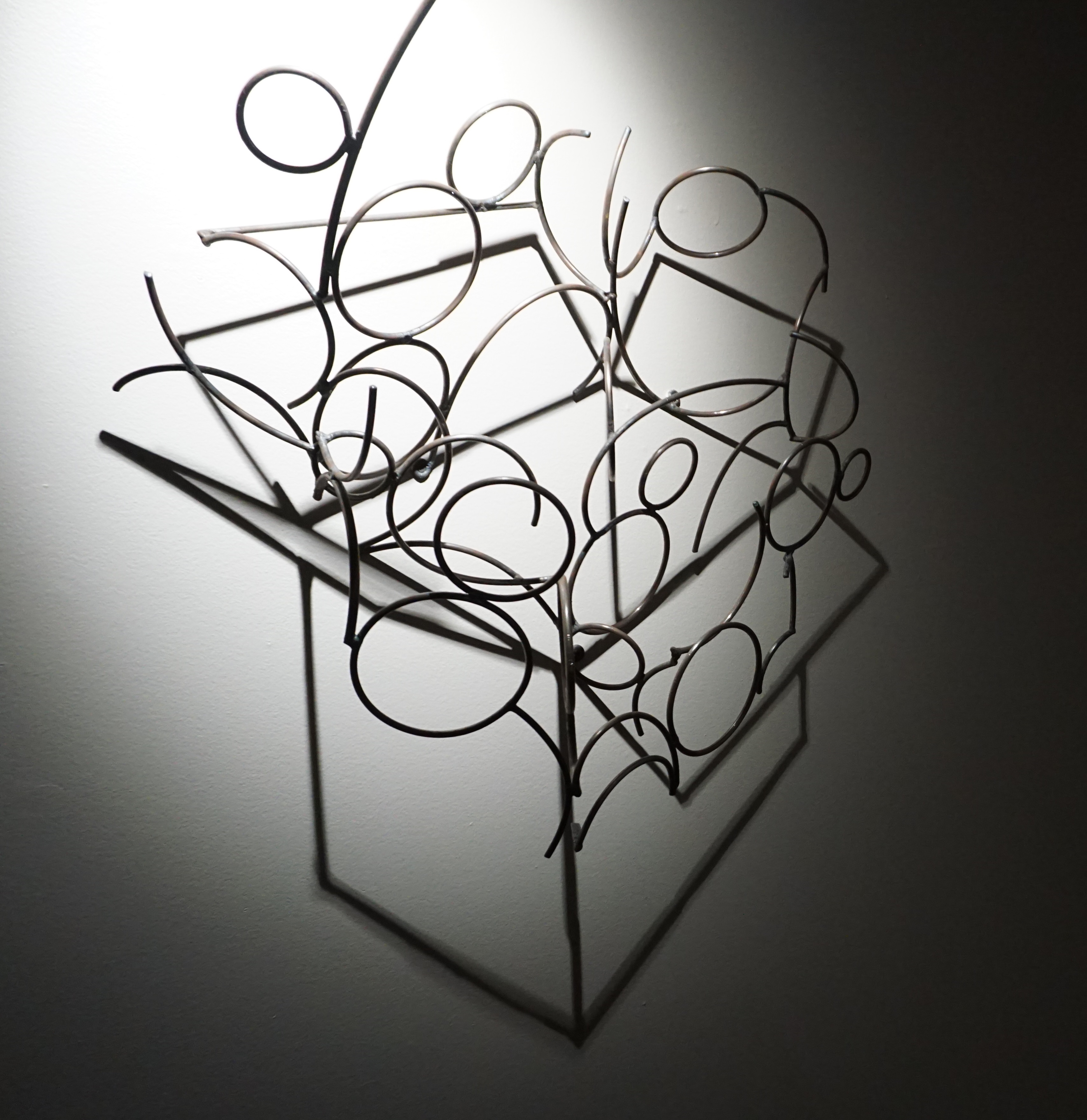Larry Kagan’s fascinating “Shadow Art” exhibit is on display at the Albany Institute of History and Art until June 2019. I have been so taken by the brilliance and depth and its meaningful relevance that I have gone there first with my own children, then with my Maimonides middle school students and yet again with college students from UAlbany. This is no ordinary artwork, it is one of a kind, and to paraphrase Rebbe Yosef Yitzchak about his father the Rebbe Rashab (regarding 3 Paintings, the last one especially): “These pieces of artwork gave me much to explore in my personal service of G-d…”
 Everyone’s first reaction to these pieces is that there is a mess of tangled metal and a pencil or charcoal drawing behind it on the wall. And then it dawns on you that nothing is drawn on the wall. Nothing. See that shoe? It’s only a shadow. Everything you see, for example the men’s dress shoe in this case, that appears to be hand-drawn is actually only a shadow of that seemingly random mess of metal. Only obviously, it is not at all random, it is not a mess, it is incredibly precise and deliberate, designed to perfection.
Everyone’s first reaction to these pieces is that there is a mess of tangled metal and a pencil or charcoal drawing behind it on the wall. And then it dawns on you that nothing is drawn on the wall. Nothing. See that shoe? It’s only a shadow. Everything you see, for example the men’s dress shoe in this case, that appears to be hand-drawn is actually only a shadow of that seemingly random mess of metal. Only obviously, it is not at all random, it is not a mess, it is incredibly precise and deliberate, designed to perfection.
How is that possible? It’s because we are looking straight ahead at the piece at our eye-level. But to understand where the shadow-shoe is coming from it has to be viewed from above, from the angle and perspective of the light that is shining at it from a precise angle on the ceiling. True, even then it is still a work of genius precision and planning, but it starts to make sense.
 A good illustration of this is the simple “Cardboard Box” piece. Michael A. (a UAlbany student we went with) was especially intrigued by this piece, because the shadow is all straight lines while the mess of metal shapes are almost all circular. True, from our perspective we see circles. But on tiptoe, looking from above, those circles form linear lines!
A good illustration of this is the simple “Cardboard Box” piece. Michael A. (a UAlbany student we went with) was especially intrigued by this piece, because the shadow is all straight lines while the mess of metal shapes are almost all circular. True, from our perspective we see circles. But on tiptoe, looking from above, those circles form linear lines!
There’s an old parable about viewing the world as the back of a needlepoint, a tangle and knotted mess of yarn. Only from the other side one can see the deliberate design and beautiful expression. Larry Kagan’s ar takes this concept to a whole different level.
Aside for the important message about perspective shift and the deliberate design vs. random chaos concept, there is so much Chassidic thought in the light and shadow of his art:
(1) Chassidus teaches us that G-d created the world using revelation and concealment, light and darkness, or light and vessel. This artwork beautifully illustrates how the interplay of revelation (light) and concealment (obstruction) creates something.
(2) Tanya Part II speaks of the dependency of the world on G-d’s constant creation “for if the Divine letters of Creation were to cease for a moment, the world would revert to nothingness”. Look how well Larry Kagan’s art depicts this statement! In fact, to demonstrate that there are no images drawn on the wall, one of the Shadow Art exhibits has a blinking light above it, so you can see the object on the wall appear and disappear from view. The light must be shining for the shadow to appear!
(3) Larry Kagan’s shadow art raises some philosophical questions: Does the shoe exist? Is it an illusion? How would you define its existence? This is also a Chassidic question, given the dependency of the physical world on the spiritual light that brings it into being. The Chassidic perspective is quite interesting and complex, and not what you might expect.
(4) For those who learned some advanced Chassidus, this might be a good example for one of the explanations/levels of something called “Reshimu”. It also adds a whole new layer of explanation to the concept how “vessels” conceal even as they reveal, and indeed, their concealment is their revelation – or in this case, its the complexity of the obstruction which creates the image.
(5) There can be so much more to this, but that’s it for now!
